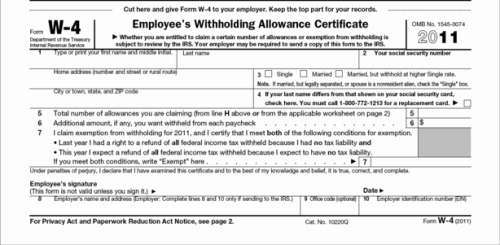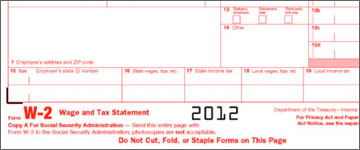Five Life Changes That Should Make You Revisit Your W-4 Withholding

Some life events result in more taxes, while others entitle you to credits and deductions that lower your taxes. The list of these events is long, but here are five of the most common:
- You get a second job
Getting a second job is the most common reason for needing to adjust your W-4. Do this whether you moonlight, have a home business or get another full-time job. Any time your income goes up, your tax liability is likely to go up, too, requiring a new W-4. If your extra income comes from a side job with no W-4, you can still adjust the W-4 at your main job to account for the increase in income.
- Your spouse gets a job or changes jobs
Any change of household income, whether up or down, could put joint filers in a different tax bracket and require both of you to modify your allowances. To ensure accuracy, use your combined income to figure the allowances. Once this is calculated, one spouse can claim all of them, or they can be divided between both W-4s.
- You’re unemployed part of the year
If you get laid off from your job and stay unemployed the rest of the year, you'll probably have too much tax withheld. But if you get rehired in the same year, you’ll need to adjust for the downtime. To avoid paying too much tax, you should increase the allowances on a new W-4. We’ll show you how to do that below.
- You get married or divorced
Tying or untying the knot will surely change your tax rate, especially if both spouses work. Married couples filing jointly qualify for a lower tax rate and other deductions. Getting a divorce will take you back to single status and reverse many tax benefits. If you fail to account for these events on your W-4 by adjusting allowances, your withholding could be inaccurate.
- You have a baby or adopt one
A new baby is more than a bundle of joy for you and your spouse. It’s a major tax event, too. You can claim an additional allowance for a dependent and may qualify for the Child Tax Credit, Child Care Tax Credit and others. If you adopt a child, there’s another tax credit. Any of these could allow you to reduce your withholding to account for the added tax benefits. Leaving your withholding as-is probably will result in a larger-than-expected tax refund.
How to Adjust Your W-4 Withholding
It’s easy to adjust your withholding. You can do it on paper or electronically. The old-fashioned way is to walk through the worksheets on the W-4 form, or for more complicated tax situations, use the worksheets in Publication 919, "How Do I Adjust My Tax Withholding?"
An even easier way is to use the IRS Withholding Calculator. This simple tool makes determining your allowances easy. Just answer the questions, and the withholding amount is computed for you.
If the result is different from your current withholding, ask your employer for a fresh W-4. You can claim as many allowances as your personal situation warrants. Another way to increase your withholdings is to put the actual amount you want deducted on Line 6 (“Additional Withholdings”) of the W-4.
You can adjust your W-4 at any time during the year. Just remember adjustments made later in the year will have less impact on your taxes for that year.
Tax Advantages of Getting Married
Marriage can help reduce the tax burden for married couples who file jointly. Depending on the incomes, so-called "marriage penalties" can be avoided.
What Is a W-2 Form?
A W-2 form shows the amount of taxes withheld from your paycheck for the year and is used to file your federal and state taxes. Here are the basics.

